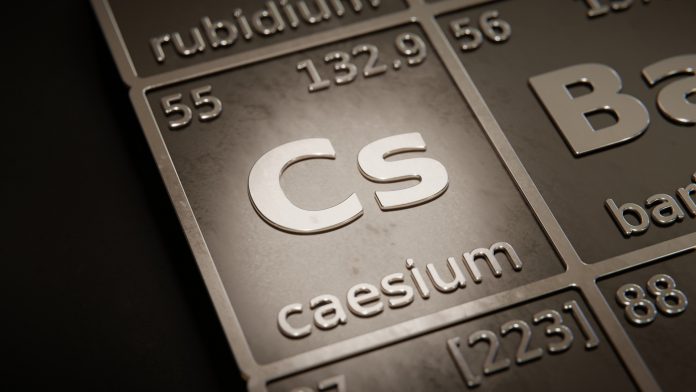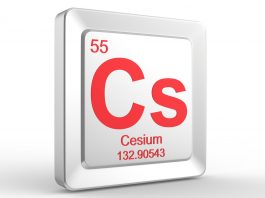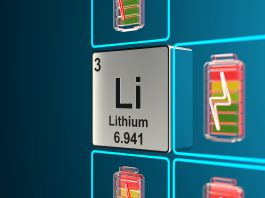Sokoman Minerals Corp. and Benton Resources Inc. have discovered a high-grade caesium-rich dyke 12km northeast of the Kraken lithium pegmatite swarm in Newfoundland.
Sokoman Minerals Corp. and Benton Resources Inc. have announced the discovery of a high-grade caesium-rich dyke with grab samples assaying up to 1.56% Cs2O (caesium oxide), 0.4% Li2O (lithium oxide), 0.022% Ta2O5 (tantalum oxide), and 0.30% Rb2O (rubidium oxide). This is the first high-grade caesium mineralisation recorded on the Island of Newfoundland.
About the discovered caesium-rich dyke
The caesium-rich dyke is approximately five to six metres wide and has been traced for approximately 100m along strike to where it disappears under overburden in both directions. The dyke is located about 12km northeast of the Kraken lithium discovery. Together, the companies have completed first-pass channel sampling across the dyke with results pending.
The caesium-rich dyke is distinctly different from the main Kraken field, containing very coarse, as well as fine-grained phases, with the coarse phase a dark grey quartz (pollucite), coarse green mica, and large (20-30cm) grey/white blocky plagioclase crystals. Minor black to green tourmaline or tantalite, as well as fine-grained pinkish garnet and other minerals, including lepidolite, a lithium-rich mica, may be present, but until petrographic work is completed, the full suite of minerals in the dyke is uncertain. Samples have been shipped to Vancouver Petrographics for thin sectioning and mineral identification.
Detailed mapping, as well as additional sampling, will be conducted once the channel results are received. Results of the petrographic examination and the channel sample values will be released as they are received.
The importance of this mineral discovery
Caesium is rare globally. The US and Canada have included caesium, lithium, and tantalum (among others) in their lists of critical minerals since each of them have been identified as being essential to the economy and national security.
At this point in time, there are only two pegmatite mines globally that produce caesium: Bitika in Zimbawe and Sinclair, Australia. However, Bitika is not currently producing the mineral.

The companies have also announced that Phase 3 drilling will start in the next few days on the Kraken main dyke and the western extension areas, where prospecting samples have given values >1% Li2O. Around 20 holes are planned.
The companies will continue with their exploration plans
Sokoman and Benton are pleased with the continued success of the Golden Hope Project and the new discovery of caesium along with lithium, tantalum, and rubidium in an area far removed from the original Kraken discovery. Given the results to date, the companies are confident that ongoing prospecting and soil geochemistry surveys will make more discoveries along the 100% owned, 60km long, structural trend hosting the Kraken and caesium-rich dykes.
The Kraken Pegmatites are highly evolved pegmatite swarms, similar to the geological environment and setting of other large systems in the Appalachian belt, including the important deposits held by Piedmont Lithium Inc. in the Carolinas, eastern US, as well as in the geologically equivalent Avalonia Project of International Lithium in a joint venture with GFL International Co. Ltd., a subsidiary of Ganfeng Lithium Co. Ltd. in the Caledonides of Ireland. All samples were submitted to Actlabs in Ancaster, Ontario for analysis by Sodium Peroxide Fusion ICPOES + ICPMS.
Timothy Froude, P Geo, President and CEO of Sokoman stated: “The LCT (Lithium-Caesium-Tantalum) potential of the Golden Hope Project continues to prove itself. With this news of the discovery of significant caesium as well as anomalous values of other critical metals, Golden Hope has evolved into a potentially significant host to many metals in high demand to power and build the new economy. We are also pleased to resume drilling in the main Kraken field, in particular to the west of the discovery area where no drilling has taken place to date and where strong soil geochemistry as well as multiple >1% Li2O samples were collected. In the meantime, soil sampling along the 60km trend controlled by the companies will continue until the closure of the camp for the holiday break.”
Stephen Stares, President and CEO of Benton stated: “The Golden Hope Project continues to deliver exceptional new discoveries and results. I’m extremely excited and encouraged that we have located further new high-grade LCT-type pegmatites and I’m confident we will make more new discoveries as we continue with our aggressive exploration plans.”









